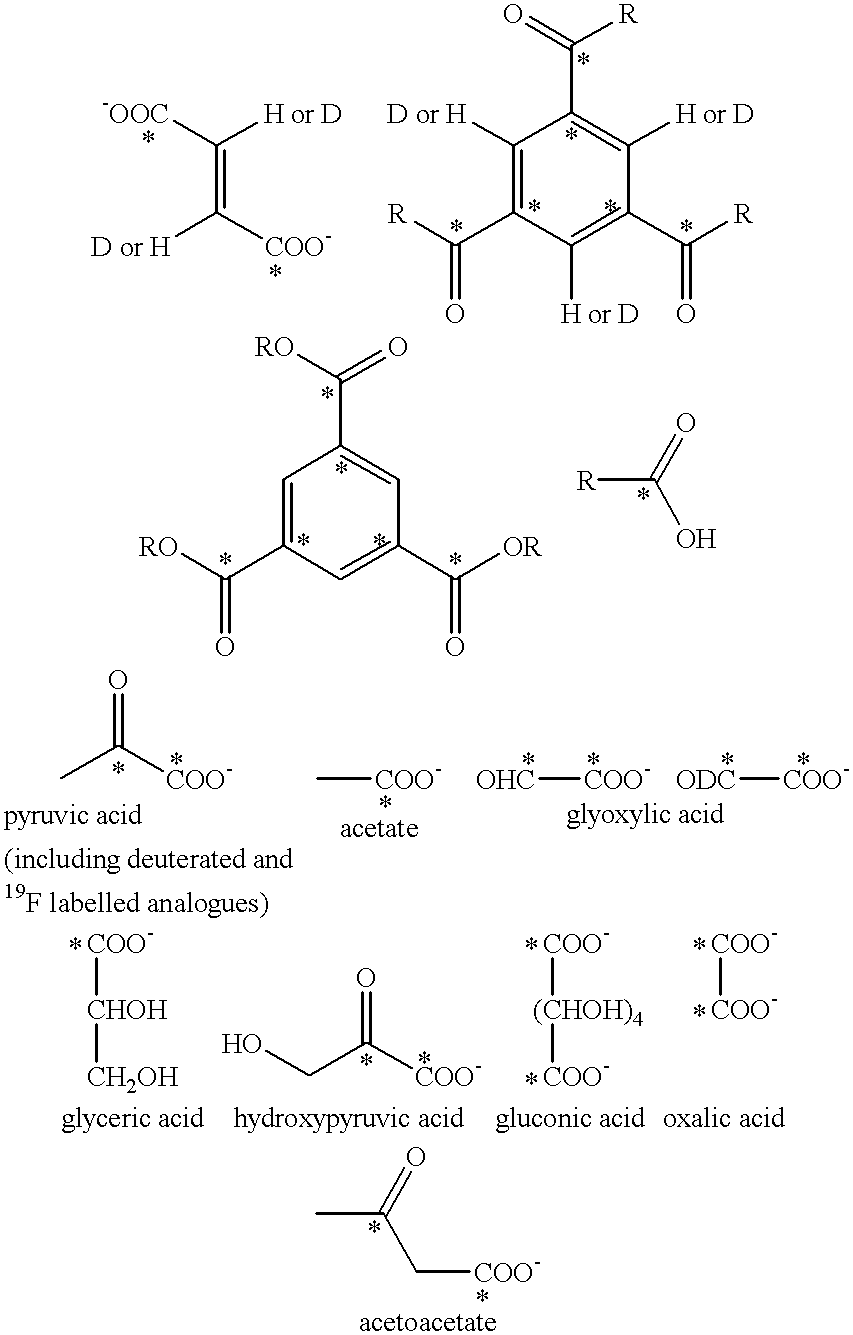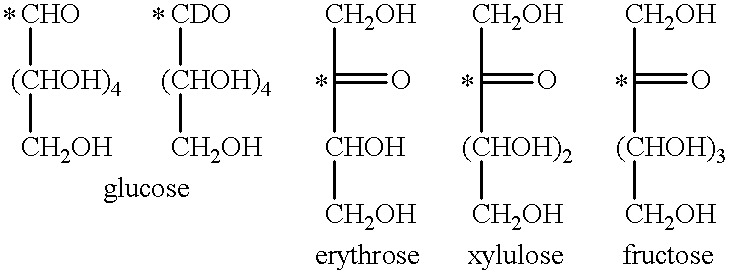Method of magnetic resonance imaging of a sample with ex vivo polarization of an MR imaging agent
a magnetic resonance imaging and sample technology, applied in the field of magnetic resonance imaging, can solve the problems of toxic and inability to be administered, polarization is quickly lost, and it takes an unacceptably long time for the medium to reach thermodynamic equilibrium
- Summary
- Abstract
- Description
- Claims
- Application Information
AI Technical Summary
Problems solved by technology
Method used
Image
Examples
example 2
300 mg of sterile Na.sub.2.sup.13 CO.sub.3 or NaH.sup.13 CO.sub.3 is placed inside a 10 ml plastic injection syringe. The gas inside the syringe is enriched with >20% oxygen. The syringe is placed inside a magnet (1-20 T) at a temperature of about 4 K (0.001-5 K) until thermodynamic equilibrium is reached.
The syringe is removed and transported to the subject located in the MRI magnet. 10 ml of sterile Ringers Solution (at 37.degree. C., pH 7.4) is aspirated and injected at a rate of 10 ml / sec immediately after the high T.sub.1 agent has dissolved. .sup.13 C MRI is performed using a fast pulse sequence. T.sub.1 in the blood is about 20 s and the distribution of the agent is followed on the MR imager.
example 3
To a sample of sodium acetate (1-.sup.13 C) is added .alpha., .gamma.-bisphenyl-.beta.-phenylallyl benzene complex (5% w / w). The compounds are milled together to give an intimate mixture, which is transferred to a borosilicate glass ampule. This is then repeatedly evacuated and filled with helium. The last time a pressure of a 200 mbar of helium is left in the ampule, which is then flame sealed.
The sample is polarized by microwaves (70 GHz) for at least one hour at a field of 2.5 T at a temperature of 4.2 K. The progress of the polarization process is followed by in situ NMR (fast adiabatic passage). When a suitable level of polarization has been reached, the ampule is rapidly removed from the polarizer and, while handled in a magnetic field of no less than 50 mT, cracked open and the contents are quickly discharged and dissolved in warm (40.degree. C.) water.
experiment 1
n is quickly transferred to a spectrometer and .sup.13 C spectrum with enhanced intensity is recorded.
PUM
 Login to View More
Login to View More Abstract
Description
Claims
Application Information
 Login to View More
Login to View More - R&D
- Intellectual Property
- Life Sciences
- Materials
- Tech Scout
- Unparalleled Data Quality
- Higher Quality Content
- 60% Fewer Hallucinations
Browse by: Latest US Patents, China's latest patents, Technical Efficacy Thesaurus, Application Domain, Technology Topic, Popular Technical Reports.
© 2025 PatSnap. All rights reserved.Legal|Privacy policy|Modern Slavery Act Transparency Statement|Sitemap|About US| Contact US: help@patsnap.com



